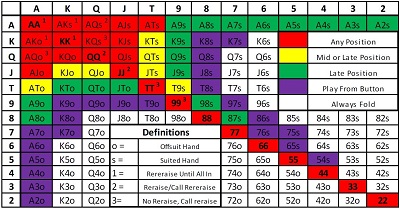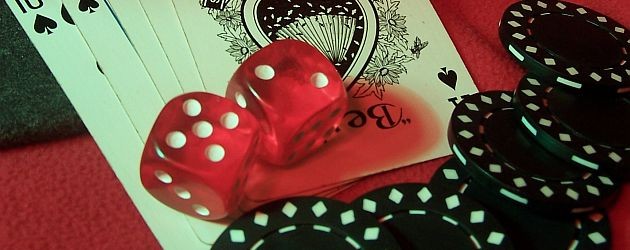Poker Odds Probabilities
- Poker And Probability
- Poker Odds Probability
- Texas Holdem Poker Odds And Probabilities
- Poker Odds
- Poker Odds And Probabilities
In the standard game of poker, each player gets5 cards and places a bet, hoping his cards are 'better'than the other players' hands.
While you don't have to be a mathematical genius to play poker (although it can certainly help), it is worth knowing some of the basic odds, probabilities and percentages behind the various hands. Poker odds give you the probability of winning any given hand. Higher odds mean a lower chance of winning, meaning that when the odds are large against you it’ll be a long time until you succeed. The probability of a straight flush or an ace low straight will be reduced in case they won’t be counted. They will become 9/10 as common as they usually would be. This pages will tell you more about card outs: Calculating Card Outs; Pot odds. In poker, pot odds are used to determine the expected value of a.
The game is played with a pack containing 52 cards in 4 suits, consisting of:
13 hearts:
13 diamonds
13 clubs:
13 spades:
Poker And Probability
♥ 2 3 4 5 6 7 8 9 10 J Q K A
♦ 2 3 4 5 6 7 8 9 10 J Q K A
♣ 2 3 4 5 6 7 8 9 10 J Q K A
♠ 2 3 4 5 6 7 8 9 10 J Q K A
The number of different possible poker hands is found by counting the number of ways that 5 cards can be selected from 52 cards, where the order is not important. It is a combination, so we use `C_r^n`.
The number of possible poker hands
Poker Odds Probability
`=C_5^52=(52!)/(5!xx47!)=2,598,960`.
Royal Flush

The best hand (because of the low probability that it will occur) is the royal flush, which consists of 10, J, Q, K, A of the same suit. There are only 4 ways of getting such a hand (because there are 4 suits), so the probability of being dealt a royal flush is
`4/(2,598,960)=0.000 001 539`
Straight Flush
The next most valuable type of hand is a straight flush, which is 5 cards in order, all of the same suit.
Texas Holdem Poker Odds And Probabilities
For example, 2♣, 3♣, 4♣, 5♣, 6♣ is a straight flush.
For each suit there are 10 such straights (the one starting with Ace, the one starting with 2, the one starting with 3, ... through to the one starting at 10) and there are 4 suits, so there are 40 possible straight flushes.
The probability of being dealt a straight flush is
`40/(2,598,960)=0.000 015 39`
[Note: There is some overlap here since the straight flush starting at 10 is the same as the royal flush. So strictly there are 36 straight flushes (4 × 9) if we don't count the royal flush. The probability of getting a straight flush then is 36/2,598,960 = 0.00001385.]
The table below lists the number ofpossible ways that different types of hands can arise and theirprobability of occurrence.
Ranking, Frequency and Probability of Poker Hands
| Hand | No. of Ways | Probability | Description |
| Royal Flush | 4 | 0.000002 | Ten, J, Q, K, A of one suit. |
| Straight Flush | 36 | 0.000015 | A straight is 5 cards in order. (Excludes royal and straight flushes.) An example of a straight flush is: 5, 6, 7, 8, 9, all spades. |
| Four of a Kind | 624 | 0.000240 | Example: 4 kings and any other card. |
| Full House | 3,744 | 0.001441 | 3 cards of one denominator and 2 cards of another. For example, 3 aces and 2 kings is a full house. |
| Flush | 5,108 | 0.001965 | All 5 cards are from the same suit. (Excludes royal and straight flushes) For example, 2, 4, 5, 9, J (all hearts) is a flush. |
| Straight | 10,200 | 0.003925 | The 5 cards are in order. (Excludes royal flush and straight flush) For example, 3, 4, 5, 6, 7 (any suit) is a straight. |
| Three of a Kind | 54,912 | 0.021129 | Example: A hand with 3 aces, one J and one Q. |
| Two Pairs | 123,552 | 0.047539 | Example: 3, 3, Q, Q, 5 |
| One Pair | 1,098,240 | 0.422569 | Example: 10, 10, 4, 6, K |
| Nothing | 1,302,540 | 0.501177 | Example: 3, 6, 8, 9, K (at least two different suits) |
Question
The probability for a full house is given above as 0.001441. Where does this come from?
Poker Odds
Answer
Explanation 1:
Poker Odds And Probabilities
Probability of 3 cards having the same denomination: `4/52 xx 3/51 xx 2/50 xx 13 = 1/425`.
(There are 13 ways we can get 3 of a kind).
The probability that the next 2 cards are a pair: `4/49 xx 3/48 xx 12 = 3/49`
(There are 12 ways we can get a pair, once we have already got our 3 of a kind).
The number of ways of getting a particular sequence of 5 cards where there are 3 of one kind and 2 of another kind is:
`(5!)/(3!xx2!)=10`
So the probability of a full house is

`1/425 xx 3/49 xx 10 ` `= 6/(4,165)` `=0.001 440 6`
Explanation 2:
Number of ways of getting a full house:
`(C(13,1)xxC(4,3))` `xx(C(12,1)xxC(4,2))`
`=(13!)/(1!xx12!)` `xx(4!)/(3!xx1!)` `xx(12!)/(1!xx11!)` `xx(4!)/(2!xx2!)`
`=3744`
Number of possible poker hands
`=C(52,5)` `=(52!)/(47!xx5!)` `=2,598,960`
So the probability of a full house is given by:
`P('full house')`
`='ways of getting full house'/'possible poker hands'`
`= (3,744)/(2,598,960)`
`=0.001 441`